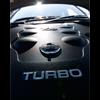Exhaust Options: Is It Better To Keep This Big One Or Go Back To Standard?
Announcements
-
Similar Content
-
Latest Posts
-
By Dose Pipe Sutututu · Posted
Is the UP Garage in the US of Ayyeee even the real UP Garage? -
By joshuaho96 · Posted
I saw some online elsewhere: https://www.transmissionpartsusa.com/product_p/67393c.htm?gQT=2 No idea if it's real, how trustworthy they are, etc. -
By Mmcmasters · Posted
Frist drift car build, got a great deal that I couldn't pass up but going into alot of unknowns and first any info is welcomed. Will be posting what I find out from taking apart the swap someone else did to figure out if they did it right and if not how to fix the problems I come across. Location Buffalo NY USA. -
Fire up the 3D printer and break out the silver paint.
-


.thumb.jpg.c167d1cbd70507f7672af463331c1b4b.jpg)



Recommended Posts
Create an account or sign in to comment
You need to be a member in order to leave a comment
Create an account
Sign up for a new account in our community. It's easy!
Register a new accountSign in
Already have an account? Sign in here.
Sign In Now